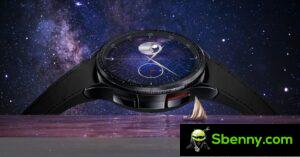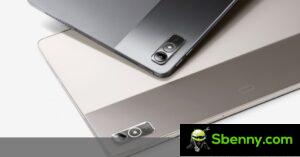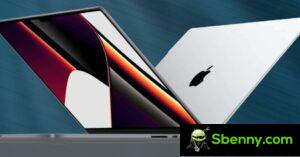Meta is introducing the first in a new line of high-end VR and mixed reality headsets starting with Meta Quest Pro (which had previously been demoed under its codename, Project Cambria). “Pro” tends to be overused in the tech world, but Meta actually sees Quest Pro being used by pros, while Quest 2 will remain for casual games.
Quest Pro is powered by the Snapdragon XR2 + Gen 1, unveiled today by Qualcomm. It promises sustained performance that is 50% higher than the XR2 within the Quest 2 and a 30% improvement in thermals. The new chip is paired with double the RAM, 12GB, and even more storage, 256GB (up from 6/128GB for Quest 2).

The Pro replaces the Fresnel lens with “pancake” optics, which reduces the depth of the device by 40% while keeping the graphics sharp. According to Meta, the Pro improves sharpness by 25% in central vision and by 50% in peripheral vision. Speaking of which, the headset is designed to leave some of your peripheral vision uncovered so that you remain aware of your surroundings. For an immersive VR experience, there are partial light blocks included in the package.
Quest Pro also uses new displays: two LCDs with quantum dot technology and local dimming. The custom hardware controls the 500 backlight LEDs and, combined with intelligent software, increases the contrast by 75%. The new displays have 37% more pixels per inch and 10% more pixels per degree, plus they have a 30% wider color gamut.
The Pro is designed for mixed reality use from scratch. It has 10 cameras: 5 looking out and 5 looking in, each of them a color camera with a resolution 4 times higher than Quest 2 (which used monochrome cams). This allows for more accurate scanning of the surrounding environment, but also color passthrough and eye and expression tracking (more on that in a moment).
With passthrough you can set up virtual monitors around you while having a clear view of the real world keyboard and mouse. Another example use case is to allow architecture designers to create 3D models and place them in the room for a virtual preview of a redesign.

As for the cameras looking inside, they follow your eyes and face so that your virtual avatar can mimic your expression. This is off by default and the tracked data never leaves the headset.
The Meta Quest Pro brings new controllers, dubbed the Quest Touch Pro. They have internal sensors that allow them to do their own detection (previously that was the work of the headphones), so you can use them behind your back as well. They have also been redesigned to be more ergonomic and with better tactile feedback.

The standard retail package also includes a charging dock (combined with a 45W USB-C adapter). This can charge the headset and controllers at the same time (controllers now have rechargeable batteries).

Meta Quest Pro will be available on October 25 for $ 1,500, nearly four times the price of Quest 2. You can pre-order it from the Meta Store in all countries where Quest products are sold. The headphones will also be available from Amazon in the US, UK, Canada and France. If you prefer physical stores, you can visit Best Buy in the US and Canada, Argos and Currys in the UK, FNAC and Boulanger in France and grab one.
By the way, the Quest Touch Pro controllers are compatible with Quest 2. They will be available as a separate purchase for $ 300 later this year.







Start a new Thread